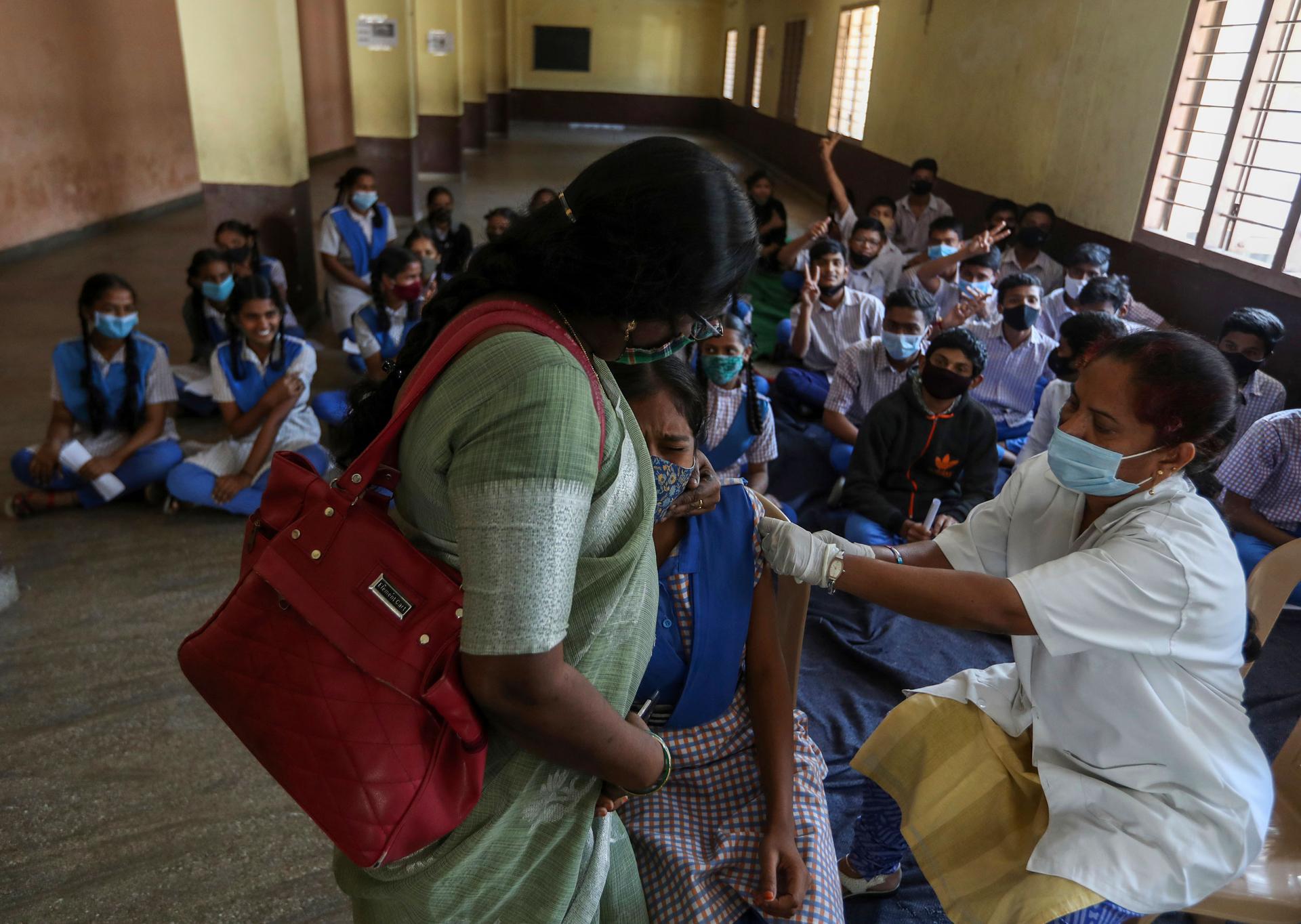This month, parents, teachers and kids in India were poised to reenter their classrooms full time. Omicron has pumped the brakes on that.
For parents like Teresa Khanna, it’s a nuisance.
“It’s been so long now that I really can’t remember how it was when he went to physical school.”
“It’s been so long now that I really can’t remember how it was when he went to physical school.”
Related: Heavy smog shuts down schools in India’s capital
Khanna’s 10-year-old son Shreyas Mukhopadhyay is in the fifth grade. His last full day in school was in March 2020. Khanna said he went to school again in November 2021 for a couple of half days, fully masked with all COVID-19 protocols in place. But soon, schools shut down again.
In Mumbai, only middle schools and high schools reopened last year, but with a remote learning option for those who didn’t want to risk the classroom.
As omicron spreads, most states in India have postponed physical school yet again.
Khanna said at first, Mukhopadhyay was excited about online learning. He could sleep in and walk up to school in the next room; he didn’t even have to wear his full school uniform because only his shirt was visible online.
But the novelty soon wore off.
Mukhopadhyay said online school is boring, and he feels “very lonely.” He misses chatting with friends in the breaks between classes.
“The 15 minutes breaks here are me just sitting in the bed and doing nothing, so I really don’t enjoy what the school has done.”
“The 15 minutes breaks here are me just sitting in the bed and doing nothing, so I really don’t enjoy what the school has done.”
He misses being in person and playing or “having funny chats with nice friends, eating food and discussing every single thing.”
“So, I definitely would like to go back to school … if possible,” he said.
It’s not just the kids who expressed disappointment. Teachers say the pace is exhausting. Many think that teaching online is much harder than in-person lessons, and they can’t tell if the kids are actually paying attention.
It’s even harder in rural India where 70% of Indians live.
Teachers have struggled as much as students to adapt to teaching and learning online, according to Rushda Majeed, who works with the Bernard van Leer Foundation, an international organization focused on early childhood development in India.
“I think this has put a lot of stress on young children and their caregivers,” she said.
Technology poses a major challenge. Having someone at home to sort out computer issues is one thing. But for so many lower-income families, access itself is a problem.
“It’s not always affordable, a lot of parents may not have access nor understanding of the digital technologies that are in use,” she said.
A lot of kids don’t have access to smartphones or reliable internet access.
The long-term impact on kids remains unknown. In September, a group of researchers documented a four-year learning deficit among underprivileged kids. What that means is that a child who was in third grade in 2020, and is heading to fifth grade this year would exhibit the reading skills of a first grader.
Majeed mentioned a UNICEF report that said 42% of children between the ages of 6 to 13 years have not been able to access any form of remote learning in India.
“We will see this play out in learning loss and so on for the next four years, unless we find ways or the government finds ways to to catch up on some of these things.”
“We will see this play out in learning loss and so on for the next four years unless we find ways or the government finds ways to catch up on some of these things,” she cautioned.
Nutrition is another concern for kids who cannot go to school now.
India has a long-running school lunch program in government schools. Majeed said for a lot of children, lunch is the main reason their parents send them to school and that has been severely affected by the school closures.
In turn, malnutrition could become more of a problem, which also impacts children’s ability to learn, she said.
School closures could also have a disproportionate impact on girls.
The National Right to Education says that 10 million girls could drop out of secondary school, which puts them at increased risk of early marriage, early pregnancy, poverty, trafficking and violence.
“For young girls, this is especially in an issue where they have dropped out of school, whether they will be allowed by families to actually go back to school, again, depending on a range of socio-economic and societal factors.”
It’s not all doom and gloom, though. Majeed said schools have adapted to tech demands at an astonishing pace. Remote learning tools are getting better. And for many parents and children, school-from-home and work-from-home have resulted in stronger bonds and a lot of quality time together.
Khanna said her son is trying new things this school year. He did a lot of coding classes last year, and this year, he is enjoying online chess.
“To balance out everything online, we’ve also started badminton coaching for him because it’s a low physical contact sport and you don’t need to be face-to-face with anybody. That also helps because a whole day of classes online and then maybe gaming is followed by a couple of other physical exercises and going out of the house.”
Mukhopadhyay summed it up like this: “Not going to school doesn’t feel right. Even though it’s a little bit more convenient, it’s not good for me mentally.”
For kids like Shreyas Mukhopadhyay — at least until the next announcement from the government — school life will mostly stay online.
